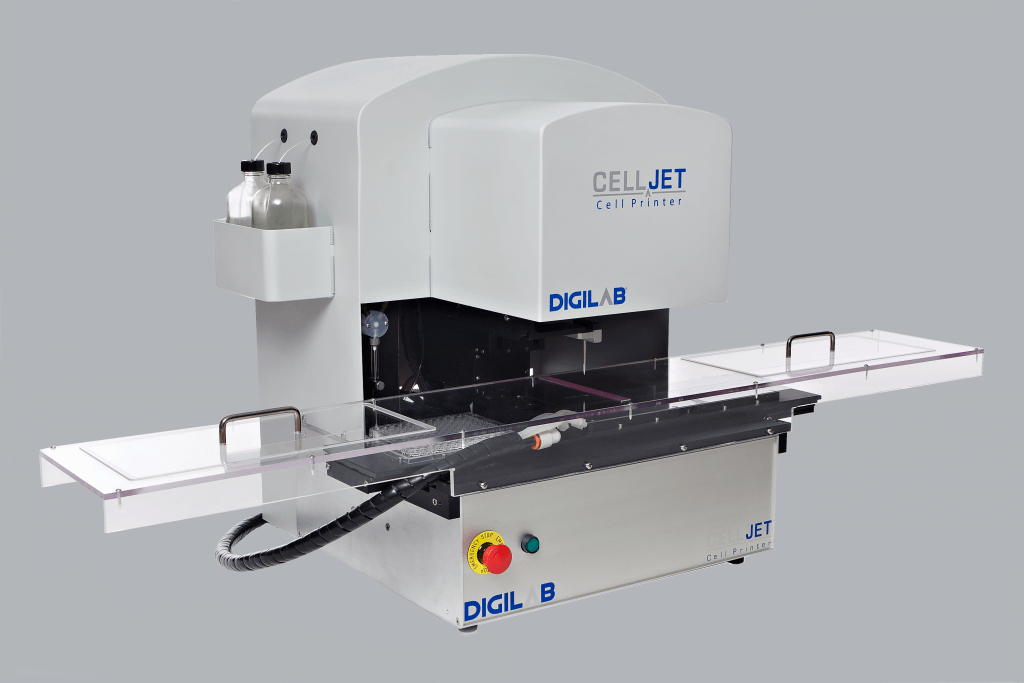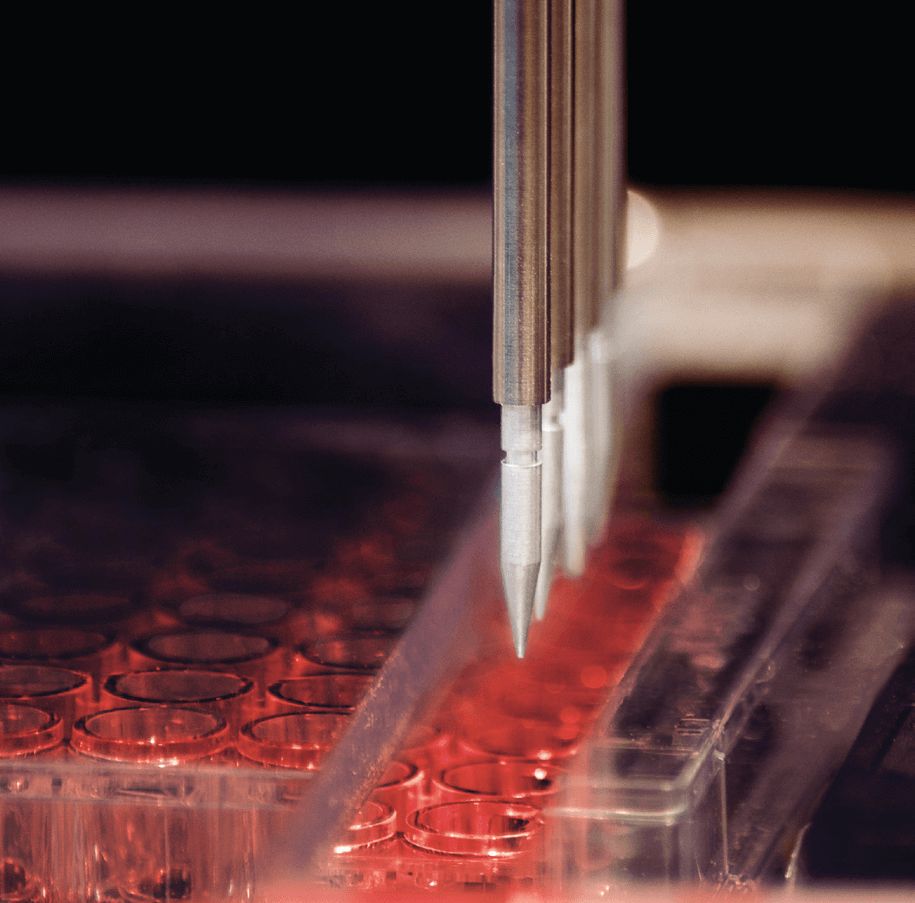 In a recent interview with Digilab‘s CEO Sidney Braginsky, Senior Applications Manager Igor Zlatkin, and John Moore, President and COO, 3DPrint.com got a glimpse of the focus, future, and advances of the company. Very popular in university research labs, pharmaceutical firms, and hospitals, Digilab has been providing spectrometry and photonics technology for the past 40 years, and even though times have definitely shifted, one thing remains the same, the company is innovative in both hardware and software. A pioneer in Fourier Transform InfraRed (FTIR) Spectroscopy, they have also invested and partnered with institutions around the world to offer customers a broad range of molecular spectroscopy alternatives beyond FTIR, like UV/Vis, NIR, and Raman; as well as even incorporating blockchain technology.
In a recent interview with Digilab‘s CEO Sidney Braginsky, Senior Applications Manager Igor Zlatkin, and John Moore, President and COO, 3DPrint.com got a glimpse of the focus, future, and advances of the company. Very popular in university research labs, pharmaceutical firms, and hospitals, Digilab has been providing spectrometry and photonics technology for the past 40 years, and even though times have definitely shifted, one thing remains the same, the company is innovative in both hardware and software. A pioneer in Fourier Transform InfraRed (FTIR) Spectroscopy, they have also invested and partnered with institutions around the world to offer customers a broad range of molecular spectroscopy alternatives beyond FTIR, like UV/Vis, NIR, and Raman; as well as even incorporating blockchain technology.
“The body is a world of complexity, and a cell is a wonderful machine, but very delicate and intricate. People forget how complex organs are, even the simplest thing we were requested to print, which is skin, has muscle, pigmentation, hair follicles, sweat glands, layers, and more, it isn’t just a simple epithelial cell. At this time, bioprinters do not create organs, researchers and scientists can make parts of organs but not the organs themselves, something no one has done yet. Even though there has recently been literature from researchers claiming to produce a beating heart, for example, the images can be misleading. There are many labs and universities using 3D printing to make organoids, in other words, groups of cells that grow into a 3D structure, as well as developing assist-to-organs, like a heart patch used to assist an organ that already exists and has damaged cells that need mending,” said Braginsky.
Recently, Digilab has been working with Israel-based biotechnology company Orgenesis, to develop a live cell printing process and systems designed to automate the production of 3D live cellular structures and tissues. The initial focus will be on liver and liver-derived cells for autologous clinical applications for point-of-care processing services. Basically, they will be trying to encapsulate insulin-producing liver cells so they can start looking at an assist to the pancreas for diabetics, which would be used to augment an organ that already exists. The partnership between the two companies will hopefully take the technology even further, the cell printer will have the ability to not only dispense cells but, for the first time, assemble living cells within a 3D matrix. Digilab’s technology, which includes a valve-free fluid path, greatly reduces cell damage. In the preliminary trials, they were able to print liver cells from the cell bank in the CellJet Live Cell Bio-Printer, which was specifically designed by Digilab to print live cells and hydrogels in any 2D and 3D configuration on any surface, microtiter well dish, or culture dish with minimal loss in cell viability. It allows for delivering of tiny volumes of liquids with cells retaining high viability of more than 95 percent after bioprinting. All printing channels on the CellJet are filled from end-to-end with a sterile buffer solution, such as PBS, to form a water-tight column in each channel.
Braginsky went on to say that “we provide the hardware and software that can work with the living cells, but many of the challenges in bioprinting are tied to the creativity, imagination and skill of the user. Thousands of researchers at institutions all over the world are using our machines, from Harvard to MIT, to a great number of universities in China and major hospitals in the US. I consider that now the speed of discoveries in the field will be picking up, specially with stem cells, which have two advantages: being able to be converted into many different types of cells and the fact that they come from the patients, so there will be no rejection.”
Most applications performed thus far on the CellJet have used a combination of two major modes of dispensing from different channels. The aspirate-followed-by-print mode, where bioinks are drawn into each of the channels from their source containers, similar to using a handheld-pipette to aspirate biological samples, except that the channels are mounted on a motorized ‘dispense head’. Then, the bioinks are dispensed either drop-by-drop or continuously in the 2D/3D pattern as programmed by the user in a method file on the AxSys software This bioprinting method is preferable for live cell printing when the exposition of the cells to minimal hydrodynamic stress is essential and relatively small volumes need to be dispensed in a single print run. The other mode is the flow-through-bioprinting mode whereby bioinks are stored in large reservoirs at the back end of each channel, which is great for bulk-dispensing of matrix or cell-free samples with volumes greater than 5 milliliters, or when repeated dispensing of the same types of bioinks is required for an application, such as tissue-based assays for high-throughput-screening in drug development.
https://www.facebook.com/digilabglobal/videos/1966994389982568/
According to Moore, two major areas of bioprinting may become the most beneficial:
“Skin regeneration, which is already a part of bioprinting and has accounted for 100 million dollars in 2013 or 10% of that total bioprinting market, is expected to reach $2,412 million by 2024 at a CAGR of 21.5 percent. And bioprinting of organs (which has not yet fully developed) that are believed to (theoretically) have certain advantages over the current patient’s dependency on donor organs including: reduced possibility of organ rejection; no need for lifelong medication to suppress the immune system of the patient, thus making the patient more resistant to infections; potentially shorter waiting time before the transplant, so the patient is healthier at the time of surgery, and reduced requirement for life-supporting interventions (like dialysis), which shortens bedtime patients spends in hospital,” he said.
The goal at Digilab is to create the machines, but the company is going well into other disruptive technologies to further enhance bioprinting. According to Zlatkin, robotics driven software, CAD capabilities, and blockchain-compatible instruments are among contributors to the company’s vanguard approach to bioprinting. They believe that if Digilab instruments are blockchain compatible it will be extremely important to the security and safe-keeping of intellectual property.
“Today, people are talking about security issues in the financial world, where blockchain technology is very important, but we also have other sectors that could seriously benefit, like hospital health information and patient records, pharmaceutical and drug discovery companies, research methodologies and results, all of which are intellectual property worth millions of dollars, and in need of protection. So the data is kept on a blockchain for security,” suggested Zlatkin.
While blockchain is often mentioned in conjunction with cryptocurrency platforms like Bitcoin, the underlying technology goes way beyond digital currencies. Blockchain is a digital ledger technology (DLT), which focuses on recording and storing transactions of any type in a shared platform. This means that if the CellJet printer is being used for testing toxicology or pharmaceuticals, that information would be kept secure within the blockchain data ledger.
“This is quite innovative in bioprinting and I believe it will become one of the main components of many scientific devices, although we may be one of the first companies in the field to incorporate it,” Zlatkin proposed.
“We also consider that robotics, AI and the new capability of sensors are going to change the face of the instrumentaion world. Robotic automation can dispense a very minute amount of cells in a particular position far more accurately and precisely than a human could, and its reproducible every time. Science is suffering from irreproducible outcomes of research, and we know that you can’t use a manual pipet and compare it to a liquid handling system that is being run by a computer. If a person has to manually dispense small volumes throughout the day, the results, accuracy and precision are bound to decrease as the day goes by, just because people get tired, but machines don’t, they can do the same thing every time, all the time,” explained Braginsky.
Digilab, based in Hopkinton, Massachusets, is one of over 100 hundred bioprinting companies in the world and has scientists researching the areas of genomics, protein analysis, nano-liter dispensing application-based expertise, live cell printing, Raman spectroscopy (Melamine detection studies), and high content imaging. Although the CellJet is their star machine, they also produce the Digilab Identity Raman Plate Reader, an innovative microplate reader based upon the power of Raman Spectroscopy; the Digilab MIAS-2™, the first high-throughput high-content microscopy reader with fully automated brightfield and fluorescence microscopic reading; liquid handling systems; DNA shearing to fragment DNA strands, and more.
In the last few years, the CellJet has been successfully printing human embryonic stem cells, human mesenchymal stem cells, human muscle stem cells, human hepatocytes, mouse smooth muscle cells, and bacterial cells such as E.coli. One of the reasons why the CellJet bioprinter is popular at labs and research centers is because it can use as a reservoir any standard sterile lab-ware such as conical tubes, sterile plastic or glass bottles, which in contrast to proprietary cartridges used in inkjet-based bioprinters, reduces costs and work burden on the customer. Users also have the freedom to choose the surfaces or substrates onto which the samples can be printed as long as they can be accommodated on the deck, as well as freedom in terms of the protocol that can be used for bioprinting. Also, any type of live cells suspended in culture media, buffer solutions such as PBS (Phosphate-buffered saline), matrix materials like Matrigel, or any other liquid material can be aspirated and printed using the CellJet.
So what can we imagine will be the uses of the machines in the next ten years?
[Images: Digilab]According to Moore,“3D printing has opened a revolutionary era in biology and medicine and many experts believe that it is emerging as the leading manufacturing paradigm of the 21st century. There are two major medicine-related applications for bioprinting. Tissue Engineering is one of them, bringing great hope to patients who are desperate to look for tissue and organ substitutes. Assay and test development is the second one. Numerous studies on various cell lines showed that 3D-printed cell cultures represent advanced, more complex systems because they involve cell-cell interactions mimicking more realistically the native tissue and its microenvironment. Additionally, regulatory pressure to ban animal testing and concerns with respect to the significance of animal experiments to model human health are strong factors to create a demand for in vitro alternative. While the largest areas of 3D applications in pharmaceutical development are expected to be cancer, toxicity assays, and testing efficacy of cosmetics.”
Subscribe to Our Email Newsletter
Stay up-to-date on all the latest news from the 3D printing industry and receive information and offers from third party vendors.
Print Services
Upload your 3D Models and get them printed quickly and efficiently.
You May Also Like
The Market and Industry Potential of Multi-Material 3D and 4D Printing in Additive Electronics
Additive manufacturing leverages computer-based software to create components for products by depositing either dielectric or conductive materials, layer by layer, into different geometric shapes. Since its birth in the 1980s,...
3DPOD 262: Bio-inspired Design for AM with Dhruv Bhate, Arizona State University
Dhruv Bhate is an associate professor at Arizona State University. There, he looks at structures, materials, and design. Previously, he worked at PADT as well as in the semiconductor and...
3DPOD 261: Tooling and Cooling for AM with Jason Murphy, NXC MFG
Jason Murphy´s NXC MFG (Next Chapter Manufacturing) is not a generalist service; instead, the company specializes in making tooling. Using LPBF and binder jet, the company produces some of the...
3DPOD 260: John Hart on VulcanForms, MIT, Desktop Metal and More
John Hart is a Professor at MIT; he´s also the director of the Laboratory for Manufacturing and Productivity as well as the director of the Center for Advanced Production Technologies....



































